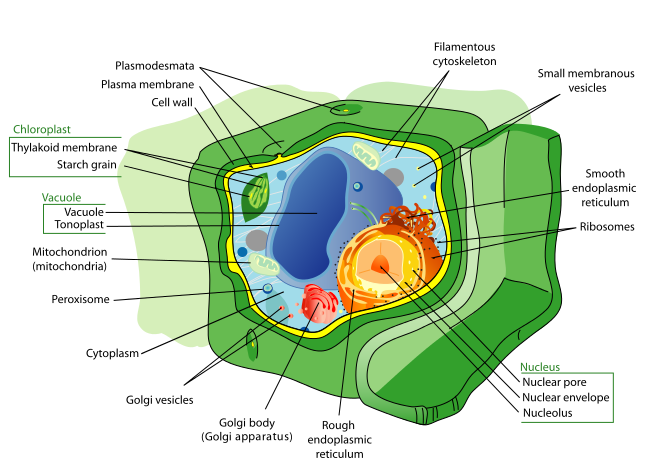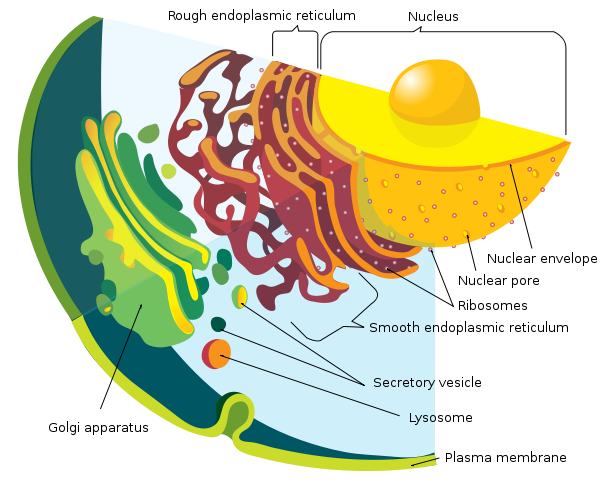Cells and Organisms
Structure of plant cell
Structure of animal cell
Organelles
In cell biology, an organelle is one of several structures with specified functions, suspending in the cytoplasm of a eukaryotic cell, or prokaryotic cell.
Examples of which include:
- Nucleus
- Mitochondria
- Endoplasmic Reticulum
- Golgi Complex
- Ribosomes
- Lysosomes
- Chloroplast (plant cells)
- … and more
Unlike in eukaryotic cells, prokaryotic cells do not contain membrane-bound organelles. However, they do contain some non-membranous organelles such as ribosomes flagella, and plasmids (circular DNA structures that are not involved in reproduction).
Eukaryotic Cells
Eukaryotic cells have a true nucleus.
- The nucleus houses DNA
Prokaryotic Cells
Prokaryotic cells do *not* have a true nucleus
- Their DNA is not separated from the rest of the cell, but is coiled up in whats called a nucleoid.
Differences Between Plan and Animal Cells
| # | Plant | Animal |
|---|---|---|
| 1 | Usually larger in size | Comparatively smaller |
| 2 | Enclosed by rigid cellulose cell wall in addition to plasma membrane | Only enclosed by a thin flexible plasma membrane |
| 3 | It cannot change it’s shape | Can often change it’s shape |
| 4 | Plastids are present. Plants exposed to sunlight contain chloroplast | Plastids are usually absent |
| 5 | A mature plant contains a large central vacuole | Often possesses many small vacuole |
| 6 | Nucleus resides on the same side of the peripheral cytoplasm | Nucleus usually lies in the centre |
| 7 | Centrioles are usually absent | Centrioles are practically present |
| 8 | Lysosomes are rare | Lysosomes are always present |
| 9 | Glyoxysomes may be present | Glyoxysomes are absent |
| 10 | Tight junctions and desmosomes are lacking. Plasmodesmata is present | Tight junctions and desmosomes are present between cells. Plasmodesmata is absent |
| 11 | Reserve food is generally stored starch | Reserve food is usually glycogen |
| 12 | Plant cells synthesize all amino acids, enzymes, and vitamins required | Animal cells cannot synthesize all required amino acids, enzymes, and vitamins required |
| 13 | Spindles formed during cell division in anastral – without esters at opposite polls | Spindle formed during cell division is amphiastral. Has an ester at each poll |
| 14 | Cytokinesis occurs by cell plate method | Cytokinesis occurs by construction or furrowing |
| 15 | Plant cells do not burst if placed in hypotonic solution due to the cell wall | Animal cells lacking contractile vacuoles usually burst if placed in hypotonic solution |






